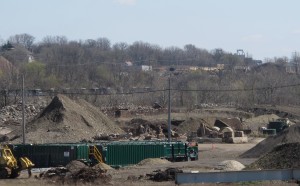Top Government Geologist Says Data Lacking on Wastewater Disposal Links to Earthquakes
-
Susan Phillips
One of the government’s top experts on earthquakes says a lack of data makes it difficult to assess the connection between wastewater disposal wells and earthquakes. A natural gas wastewater disposal well in Youngstown, Ohio made headlines on New Year’s Eve when it caused a 4.0 magnitude earthquake. The U.S. Geological survey released a report this year that documents a significant jump in seismic activities in areas of new gas and oil development. Earthquakes caused by fracking have been documented in England. In the U.S., the earthquake connection is with the methods used to dispose of frack fluid in underground injection sites, like the one in Youngstown.
Dr. William Leith, the senior science advisor at the U.S.G.S, testified Tuesday before the Senate’s Committee on Energy and Natural Resources. Leith listed several unanswered research questions, including methods to prevent such quakes, and how much damage could result from one of these “man-made” temblors.
“Currently the precise data on injection volumes, rates and pressures needed to address these research questions are simply lacking for many sites of induced seismicity,” said Leith.
He says the current requirements for companies operating underground injection wells are not sufficient to determine whether they are causing significant seismic activity.
The issue surrounding a lack of good research data was echoed by Dr. Murray Hitzman, who also testified at Tuesday’s hearing. Hitzman is a professor at the Colorado School of Mines and served as the chairman of a committee that recently issued a report to Congress on the connections between energy development and earthquake risks. Hickman says the National Research Council review identified gaps in the research data.
“… injection wells used only for the purpose of waste water disposal normally do not have a detailed geologic review performed prior to injection and the data are often not available to make such a detailed review,” said Hitzman. “Thus, the location of possible nearby faults is often not a standard part of siting and drilling these disposal wells. In addition, the presence of a fault does not necessarily imply an increased potential for induced seismicity. This creates challenges for the evaluation of potential sites for disposal injection wells.”
And it’s not just deep injection disposal well sites that are potential earthquake triggers. Hitzman also described the earthquake potential of geothermal, and carbon capture and sequestration.

















